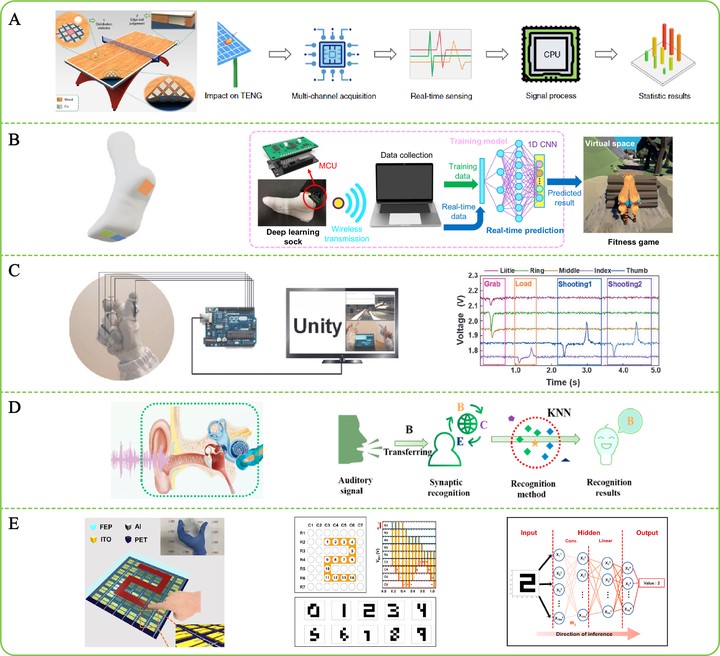 Image credit: [chen et al.]
Image credit: [chen et al.]
Abstract
The rapid advance of the Internet of Things (IoT) has attracted growing interest in academia and industry toward pervasive sensing and everlasting IoT. As the IoT nodes exponentially increase, replacing and recharging their batteries proves an incredible waste of labor and resources. Kinetic energy harvesting (KEH), converting the wasted ambient kinetic energy into usable electrical energy, is an emerging research field where various working mechanisms and designs have been developed for improved performance. Leveraging the KEH technologies, many motion-powered sensors, where changes in the external environment are directly converted into corresponding self-generated electrical signals, are developed and prove promising for multiple self-sensing applications. Furthermore, some recent studies focus on utilizing the generated energy to power a whole IoT sensing system. These systems comprehensively consider the mechanical, electrical, and cyber parts, which lead a further step to truly self-sustaining and maintenance-free IoT systems. Here, this review starts with a brief introduction of KEH from the ambient environment and human motion. Furthermore, the cutting-edge KEH-based sensors are reviewed in detail. Subsequently, divided into two aspects, KEH-based battery-free sensing systems toward IoT are highlighted. Moreover, there are remarks in every chapter for summarizing. The concept of self-powered sensing is clarified, and advanced studies of KEH-based sensing in different fields are introduced. It is expected that this review can provide valuable references for future pervasive sensing and ubiquitous IoT.